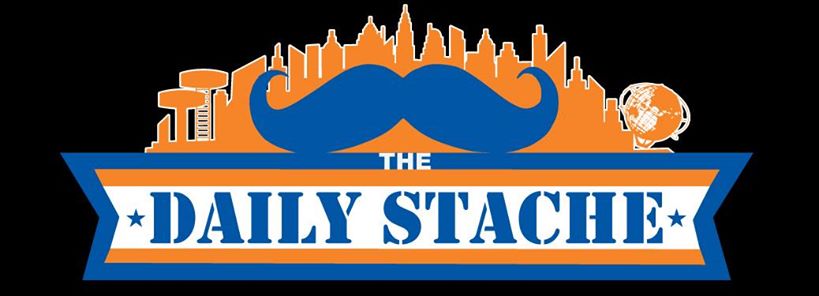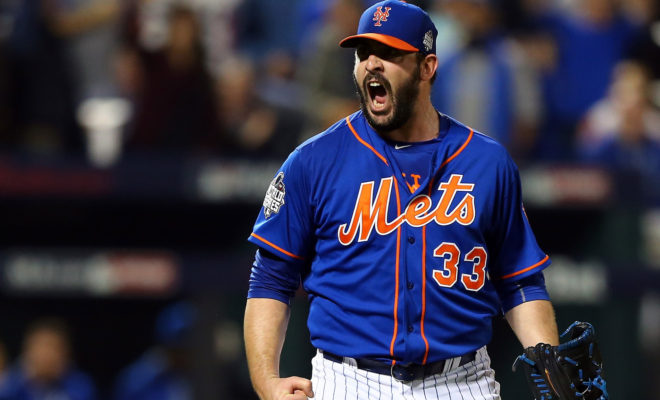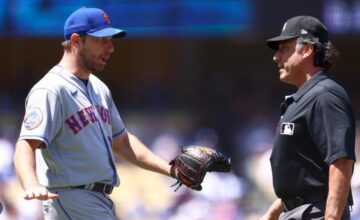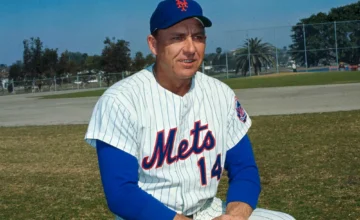When Matt Harvey was heading through the Mets’ minor league system, the hype was real. Harvey was the first big prospect in a long time to come through the system with true superstar potential. Sure, we now know that Noah Syndergaard, Jacob deGrom and Steven Matz were soon to follow (not to mention Zack Wheeler), but Harvey took the city by storm, and it looked like he was the hero the Mets had long been looking for.
Here’s evidence:
After bursting on the scene in 2012 and continuing to grow his legend in 2013, Harvey’s first dose of adversity struck after he started for the NL in the All-Star game at Citi Field. On Aug. 26, Harvey was diagnosed with a partial tear of the ulnar collateral ligament in his right elbow and was placed on the disabled list.He had logged 178 1/3 innings at that point.
On Sept. 17, Harvey said he would try rehab before opting for surgery, but the Mets announced on Oct. 4 that Harvey would have Tommy John surgery to repair his right elbow. Because of the procedure, Harvey was expected to miss the entire 2014 season.
On October 22, 2013, Harvey underwent successful Tommy John surgery to replace the partially torn ulnar collateral ligament in his right elbow. Dr. James Andrews performed the operation in Gulf Breeze, Florida.
On April 9, 2015. Harvey returned from surgery, and allowed no runs in six innings while striking out nine against the Washington Nationals. He finished 13-8 with a 2.71 ERA. But it was in December that New York’s favorite darling started to have a bit of a tainted image.
Harvey’s agent, Scott Boras, publicly expressed concern with the Mets’ stated plans to allow Harvey to pitch around 190 innings in the regular season, and also pitch “a reasonable amount” in the postseason. Boras suggested that better medical advice, allegedly given by Dr. James Andrews, was to cap the innings at 180, and no postseason activity.
Harvey was stuck between a rock and a hard place, and either way, he was going to piss somebody off.
Harvey initially appeared to agree with Boras, in contrast with his cultivated image of toughness and desire to compete and win at all costs, including having previously objected to efforts by the Mets to both proceed cautiously in his recovery with respect to the timetable for his return. After backlash against Harvey’s initial comments from Mets fans and the media,Harvey wrote in The Players’ Tribune that the innings limit only applied to the regular season and that he would pitch in the playoffs.
2016 was nothing short of a nightmare for Harvey, who went 4-10 with a 4.86 ERA before ultimately going on the shelf with Thoracic Outlet Syndrome. Since this injury is uncommon, his future is hard to predict, although the Mets remain optimistic about his progress.
If he returns to form, which we all hope, Harvey is not someone who should just be discarded. While I often see fans willing to include him in hypothetical trade offers, for some reason already knowing that his destiny is in the Bronx (he grew up a Yankee fan) one day, I think he very much has a future in Flushing, and not as much pressure will be on him this time around. With Noah Syndergaard establishing himself as the Mets’ ace, along with progression from Jacob deGrom and Steven Matz, and hopefully some sort of contribution from Zack Wheeler, Harvey should slide in to the number 3-4 slot in the rotation.
We need to understand that it could be a long road back, but you don’t just get rid of former CY Young contenders. He’s not old or over-the-hill. For all we know, he could be ready for a comeback of epic proportions, because he is nasty on the mound. You know he wants to prove all the naysayers wrong.
The man who many have deemed the Mets’ joker can return once again to being the Dark Knight. The Dark Knight eventually rises right? Let’s hope that’s the case here. Only time will tell.




